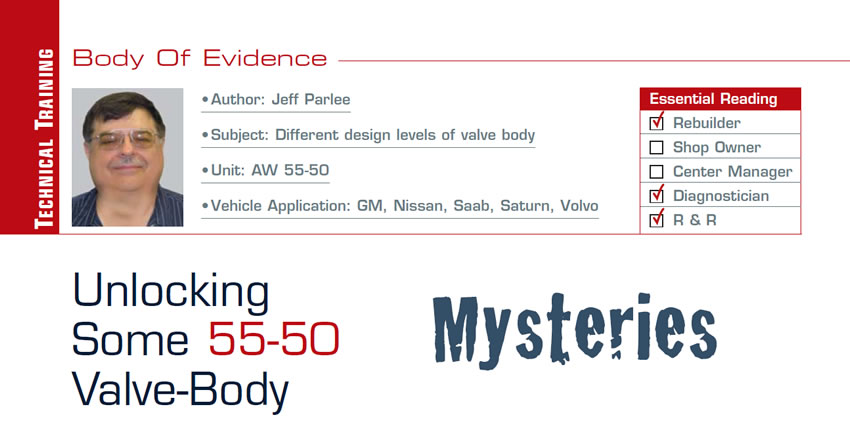Vacuum Testing Ford 5R55W/S
From the TASC Force we reprint a series of in-depth test instructions for checking the serviceability of valve bodies.

Vacuum Testing ZF 6HP19/26/32 (Gen 1), Ford 6R60/6R80
From the TASC Force we reprint a series of in-depth test instructions for checking the serviceability of valve bodies.

Toyota A750E/F Small Parts
Toyota A750E/F
There are some pitfalls that can trip you up with this valve body.
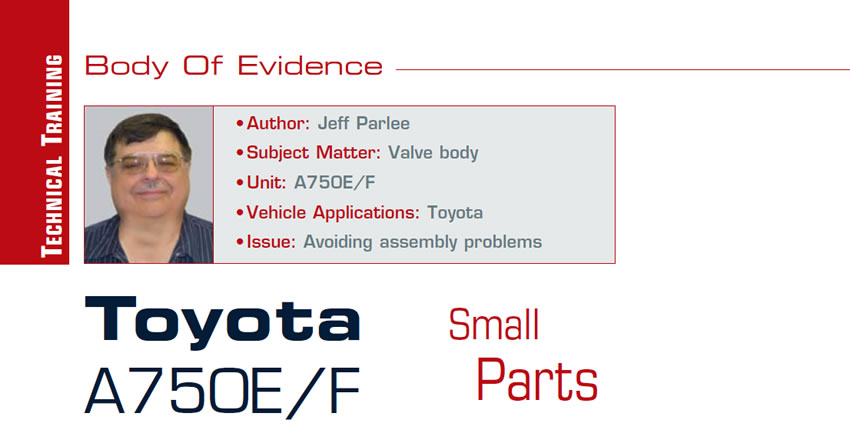
Vacuum Testing GM 4L60-E
From the TASC Force we reprint a series of in-depth test instructions for checking the serviceability of valve bodies.
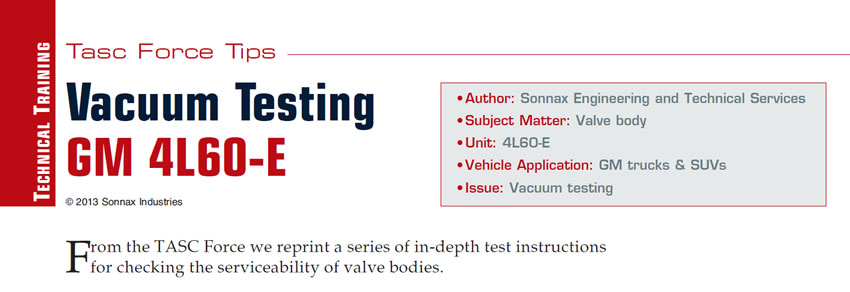
TF60SN (09G) Shift Complaints
Almost every transmission family ever produced has had weak spots or difficult areas to deal with, whether it is operation, diagnosis or assembly. The Volkswagen TF60SN (Aisin produced) is no exception.
One area of the TF60SN (09G) that has surfaced as troublesome is the valve body. In addition to the normal valve-body issues is the electrical concern. Today’s valve bodies not only have a ton of electrical do-dads to deal with, but the complexity of the items has also increased.
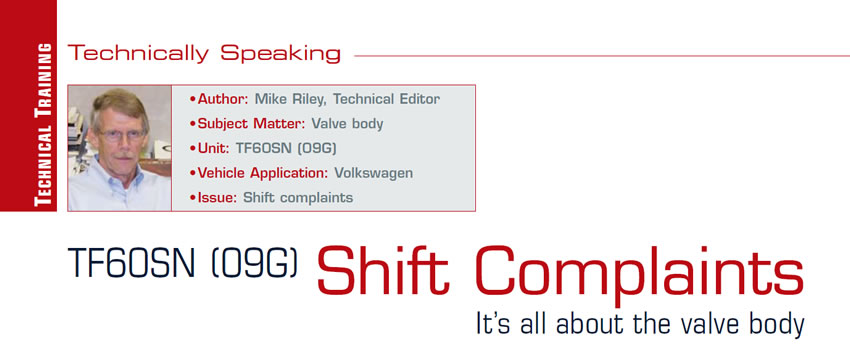
Vacuum Testing Toyota U140E/240E/241E
From the TASC Force we reprint a series of in-depth test instructions for checking the serviceability of valve bodies.

Valve-Body and Gasket Changes for the TF81
The TF81 (aka AF21) valve body has undergone some changes that you should be aware of.
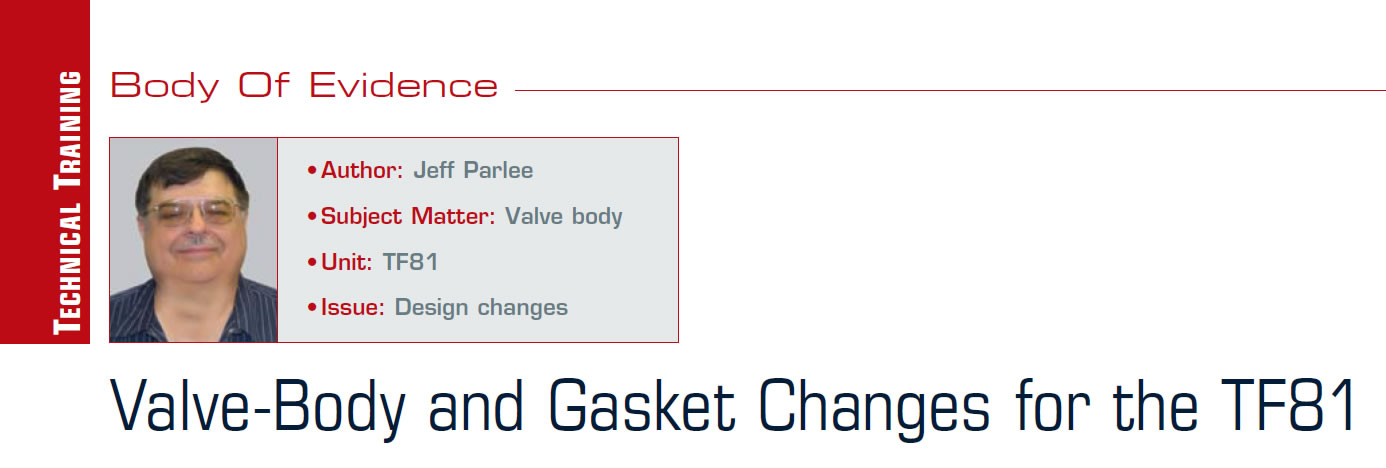
Diagnosing Valve Bodies with Vacuum Testing
Valve and bore wear occurs when valves repeatedly stroke in a pump or valve-body casting (figures 1 & 2). This wear will eventually increase clearance beyond what is necessary to maintain a proper hydraulic seal, making it impossible for the valve to function properly. Computer adaptive strategy will attempt to compensate for poor performance in some units, but failure ultimately results, codes are set and drivability complaints occur.
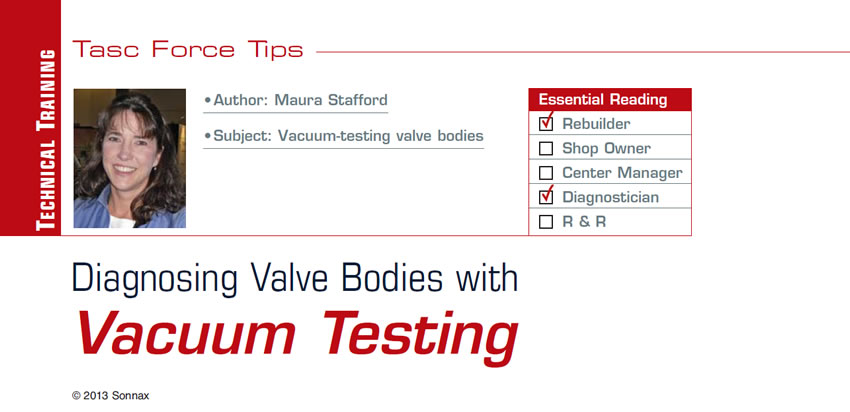
Valve-Body and Plate Changes for the 5R55S
In 2009, Ford changed the casting of the 5R55S valve body and changed the separator plate as well.
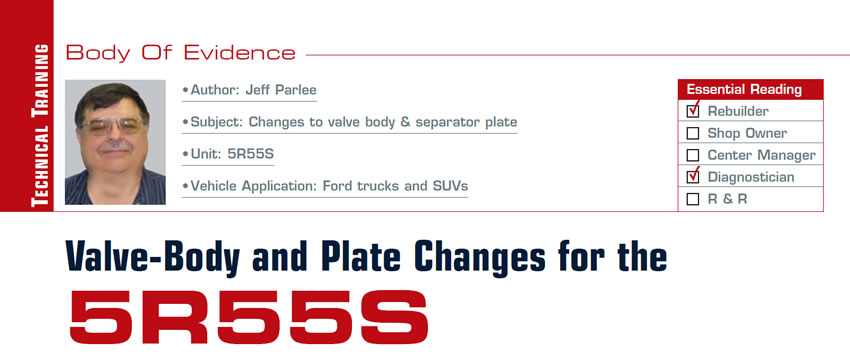
Valve-Body Qualification
Although traditional visual indicators such as the wiggle, deflection, flashlight and visual bore-wear inspection are still useful, we’ll start this review with pressure and vacuum before finishing up with valve-body test stands.
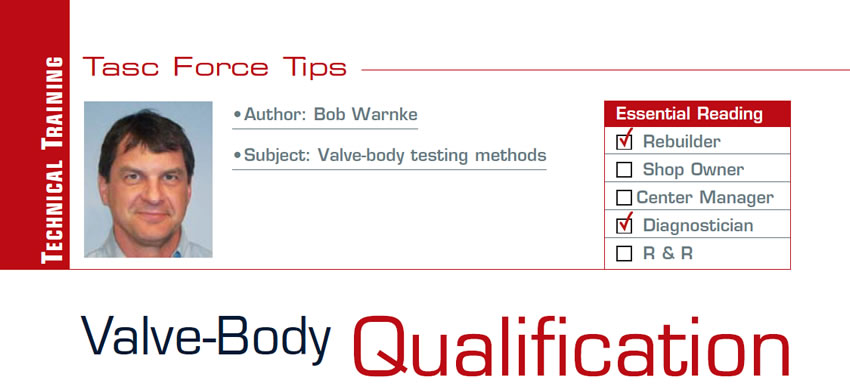
Talkin’ ’Bout My Gen-eration
A perfect example of rapid transmission evolution is the ZF six-speeds. In these units, modifications to the mechatronic (Figure 1) were made in 2006 to increase oil flow, which reduced the duration of the shifts. So ZF6 “Generation 1” ranges from 2000 to 2005 and encompasses the ZF 6HP19/26/32 versions; ZF6 “Generation 2” ranges from 2006 through current production and refers to ZF 6HP21/28/34 units. These 19, 26, 32 and 21, 28 and 34 numbers designate sequentially larger amounts of torque capacity of the transmission.
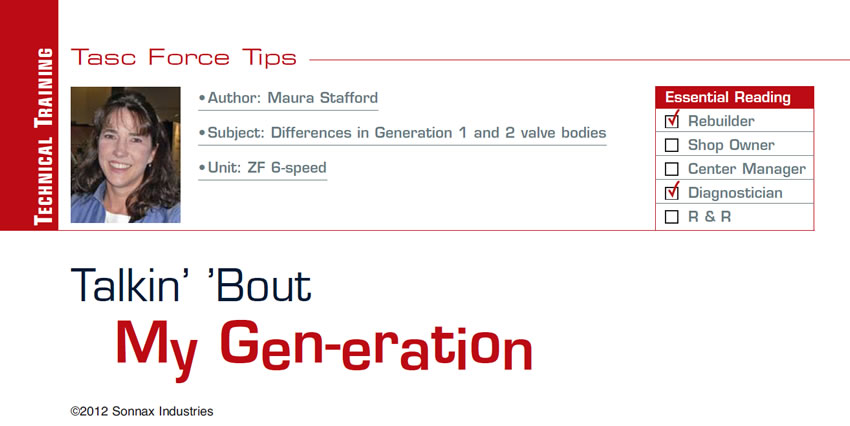
Unlocking Some 55-50 Valve-Body Mysteries
Let’s start with identifying the AW 55-50 valve body and the differences that matter when you’re choosing a replacement valve body. There are four castings, which can be identified by either a letter cast into the valve body just to the right of the S4 solenoid or a blank spot.
